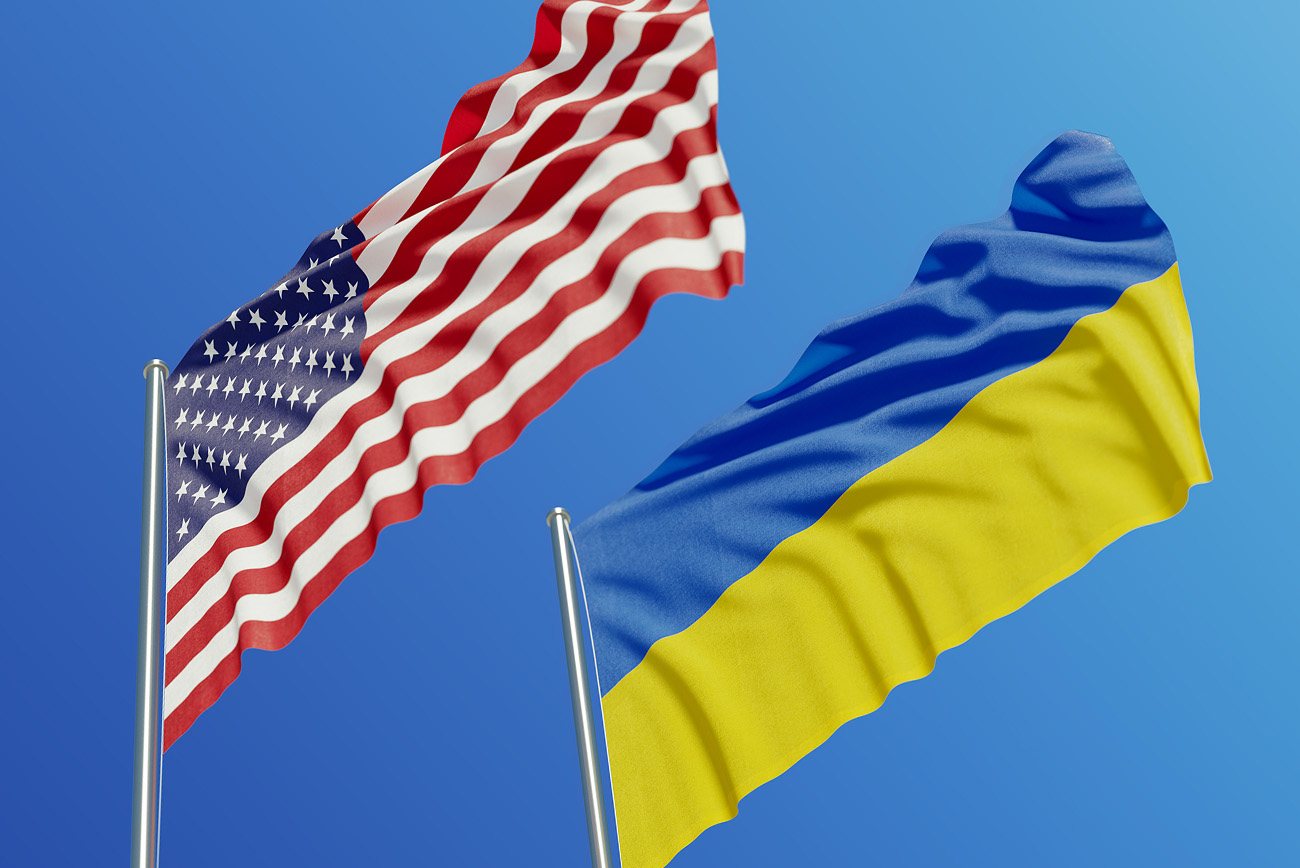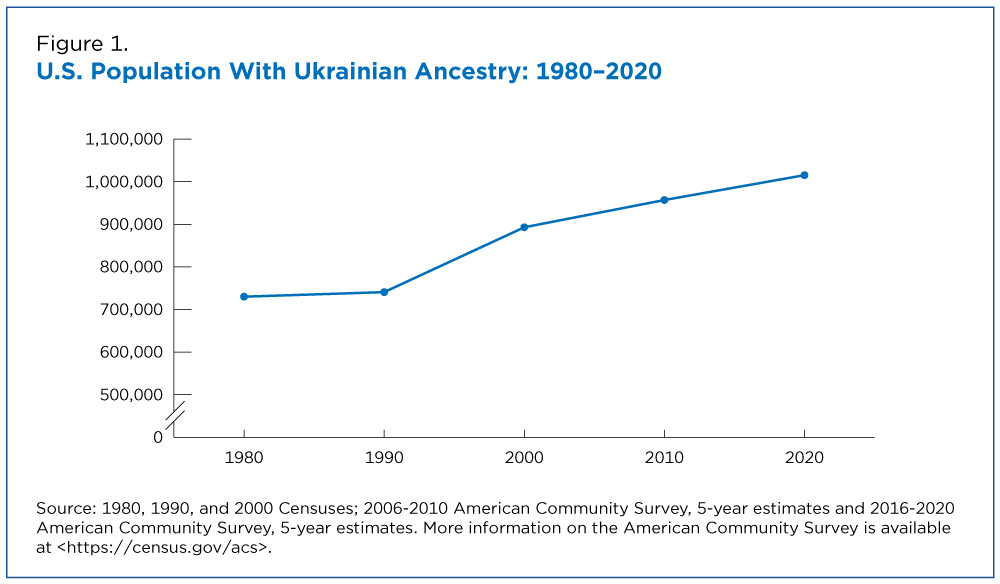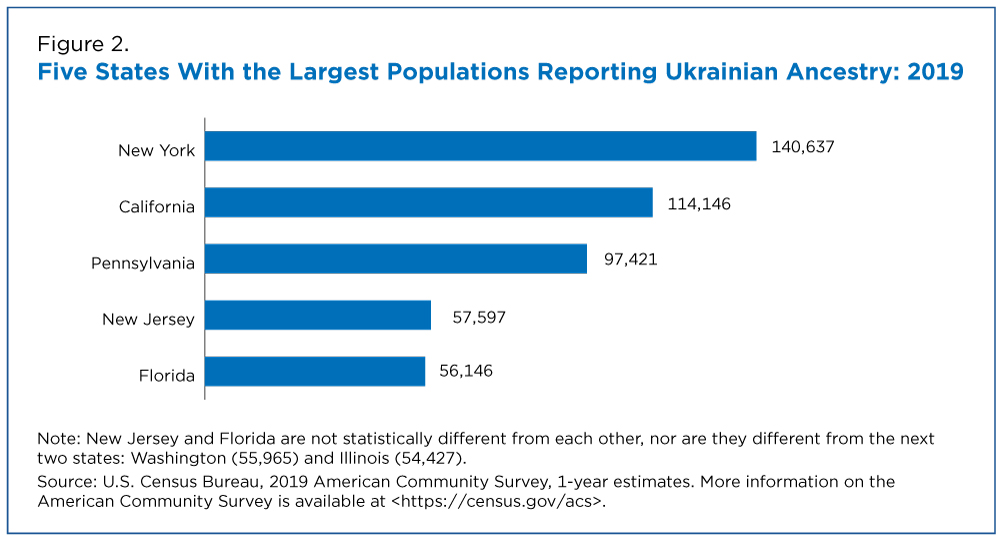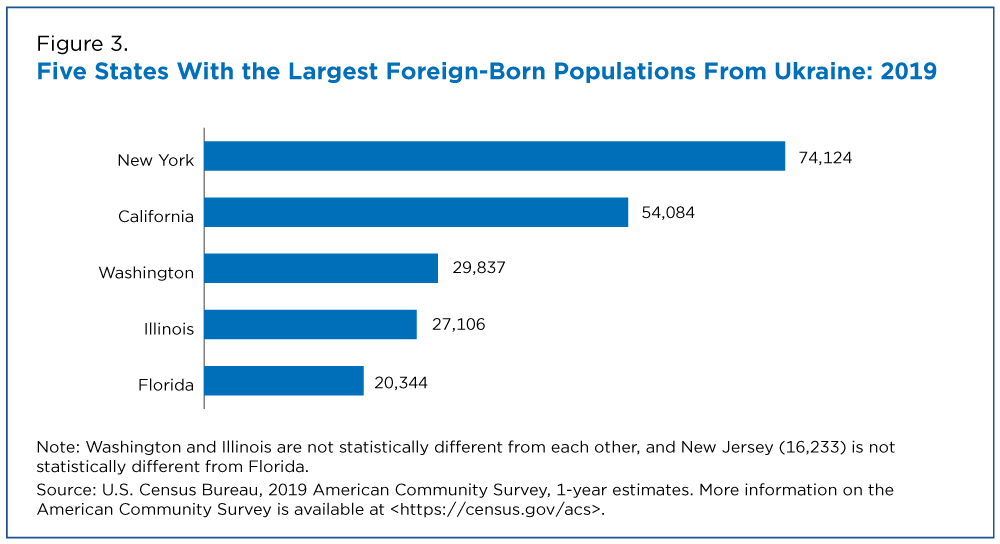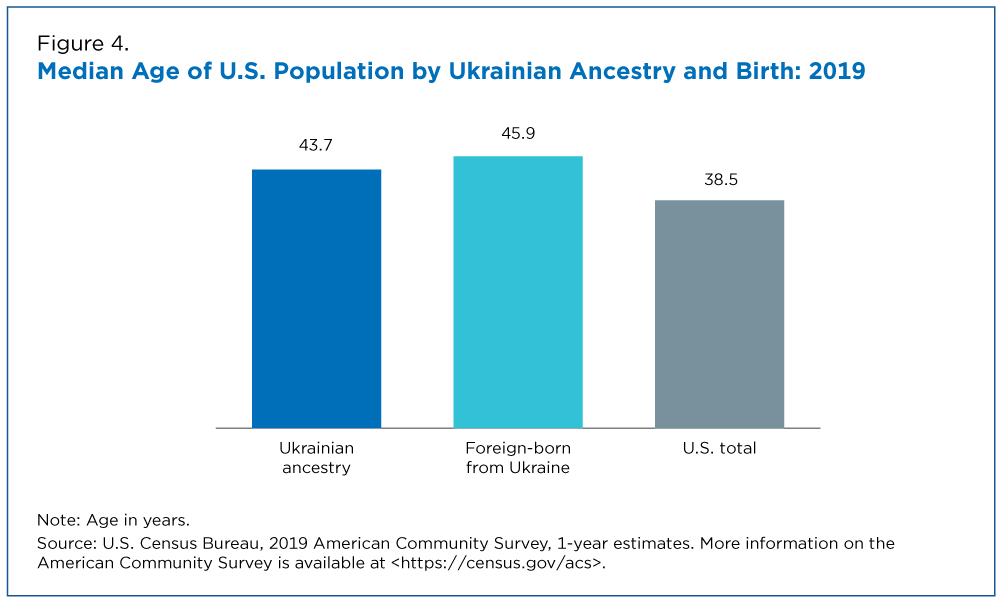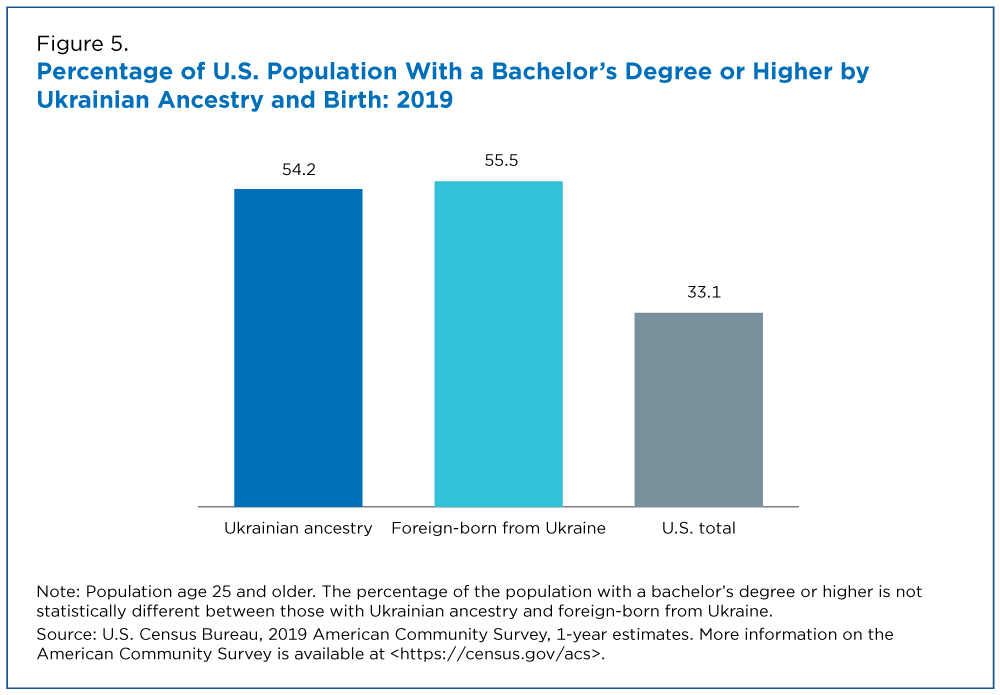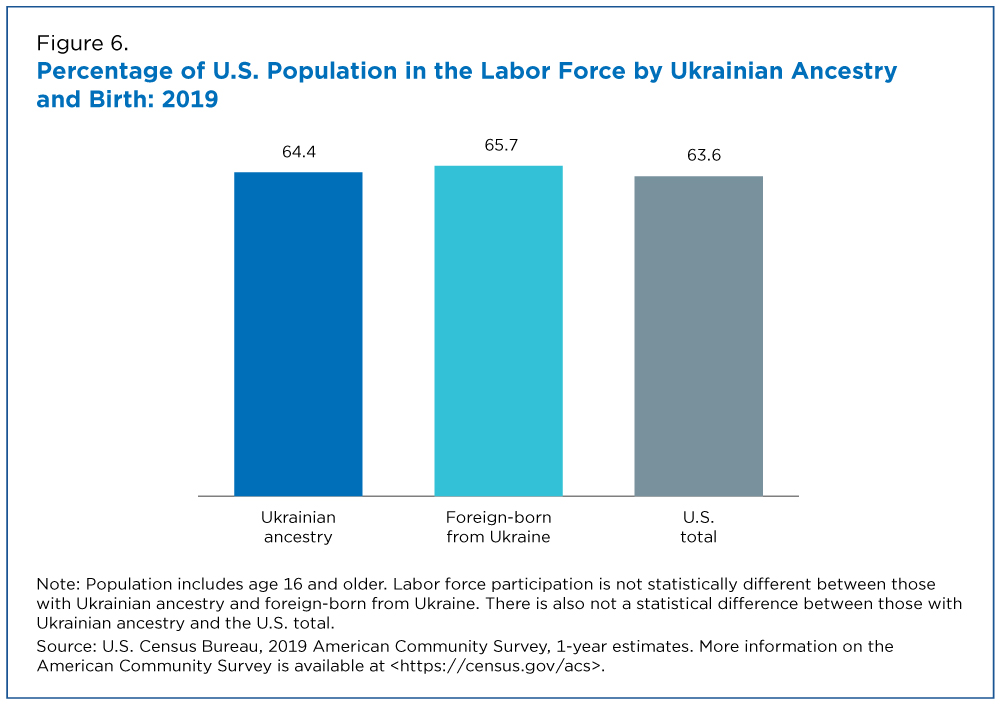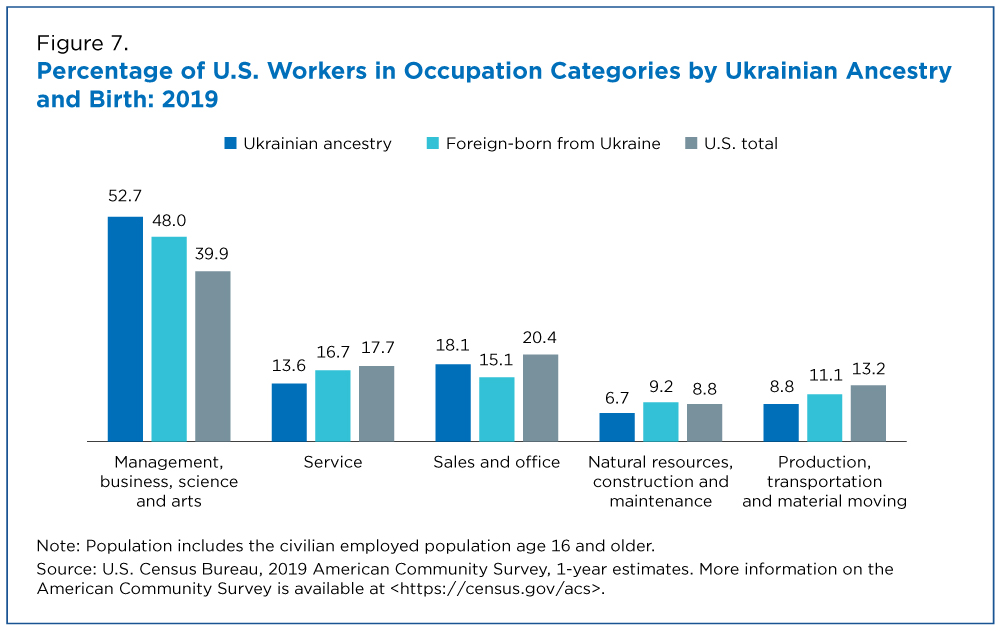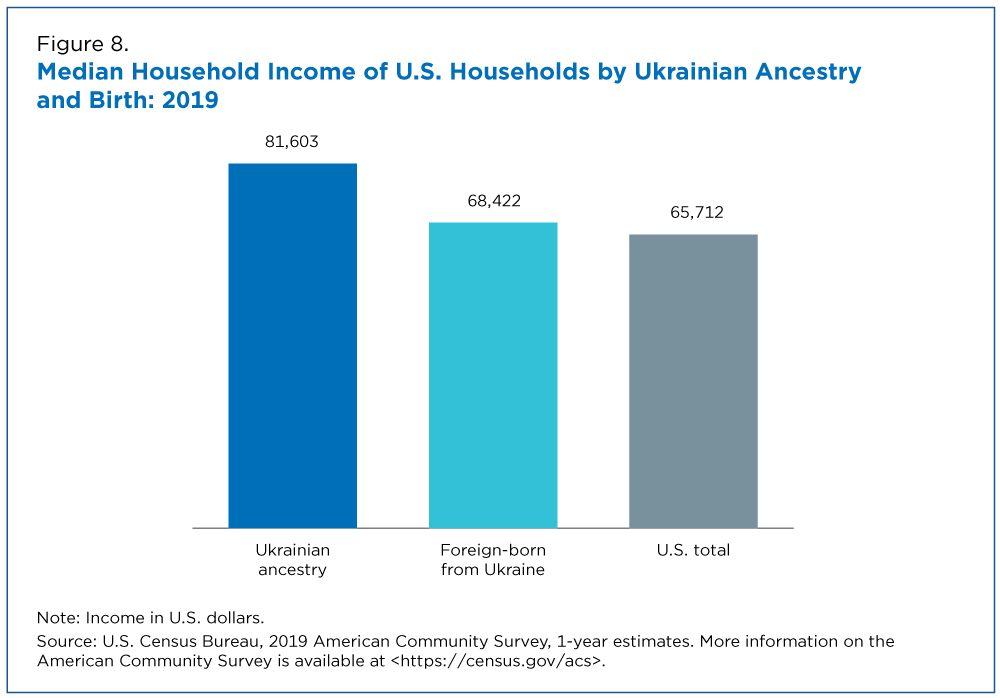Nation's Population of Ukrainian Ancestry Grew Fastest After Dissolution of Soviet Union
When the U.S. Census Bureau began collecting information on ancestry in 1980, there were an estimated 730,056 people who claimed Ukrainian origins.
That number did not substantially change until after the dissolution of the Soviet Union in 1991. By 2020, the Ukrainian population in the United States had topped one million.
The Census Bureau’s American Community Survey (ACS) data (1-year and 5-year estimates), along with decennial census data from 1980, 1990, and 2000, give us current and historical perspectives on the U.S. population with Ukrainian ancestry and on the foreign-born population from Ukraine.
Together, these data paint a demographic and socioeconomic portrait of these populations, from where they live and how old they are to what jobs they hold and how much they make.
The U.S. population with Ukrainian ancestry did not grow substantially in the 1980s but grew at a faster rate during the 1990s after the breakup of the Soviet republics.
Defining Ukrainian Ancestry and Foreign-Born From Ukraine
Data about the population with Ukrainian ancestry are gathered from the ancestry question on the ACS. “Ancestry” refers to a person’s self-identification of their ancestry or ethnic origin and can include descent, roots, heritage, or place of birth of the person or their ancestors.
People who identify with a specific ancestry could have been born abroad or in the United States. That is why the number of people identifying with a certain ancestry is usually larger than the number who were born in that country.
In this analysis, Ukrainian ancestry includes those who reported Ukrainian ancestry only as well as people who reported other ancestries in addition to Ukrainian.
Data on the foreign-born from Ukraine are derived from the citizenship question and the place of birth question on the ACS.
“Foreign-born” refers to anyone who is not a U.S. citizen at birth. This includes naturalized U.S. citizens, lawful permanent residents (immigrants), temporary migrants (such as foreign students), humanitarian migrants (such as refugees and asylees), and unauthorized migrants.
The term “foreign-born” does not include those who had at least one U.S. citizen parent when they were born, since those individuals acquired U.S. citizenship at birth.
“Foreign-born from Ukraine” refers to foreign-born individuals born in Ukraine. In other words, individuals who were born in Ukraine, excluding those who had at least one U.S. citizen parent when they were born, are foreign-born from Ukraine.
Note that the foreign-born population from Ukraine may include individuals who do not report Ukrainian ancestry. In this story, “foreign-born population from Ukraine,” “born in Ukraine,” and “Ukrainian-born population” are used interchangeably to refer to the foreign-born population born in Ukraine.
Historical Population Trends
The U.S. population with Ukrainian ancestry did not grow substantially in the 1980s but grew at a faster rate during the 1990s after the breakup of the Soviet republics. According to the most recent estimates (2016-2020 ACS), the total Ukrainian population was 1,015,209.
Where They Live
According to the 2019 ACS 1-year estimates, New York has the highest number of people who reported Ukrainian ancestry (140,637), followed by California (114,146) and Pennsylvania (97,421). There were also 50,000 or more people with Ukrainian ancestry in New Jersey, Florida, Washington and Illinois (Figure 2).
New York also has the highest number of people born in Ukraine (74,124). The state with the second highest number born in Ukraine was California (54,084). Washington, Illinois and Florida all had 20,000 or more people born in Ukraine (Figure 3).
Age
With a median age of 45.9 years, the foreign-born population from Ukraine is older than the population with Ukrainian ancestry (43.7 years) and the total U.S. population (38.5 years) (Figure 4).
Education
Over half of people with Ukrainian ancestry and foreign-born from Ukraine age 25 and older have a bachelor’s degree or higher (Figure 5). By comparison, 33.1% of the total U.S. population age 25 and older reports having a bachelor’s degree or higher.
Labor Force
The Ukrainian-born population age 16 and older is more likely than the total U.S. population age 16 and older to be in the labor force (Figure 6).
Occupations
Notably, among those ages 16 and older in the labor force, people with Ukrainian ancestry (52.7%) and foreign-born from Ukraine (48.0%) are more likely to be a part of management, business, science, and arts occupations compared to 39.9% of the U.S. population (Figure 7).
People with Ukrainian ancestry and foreign-born from Ukraine ages 16 and older in the labor force are less represented in production, transportation, and material moving occupations than the U.S. population age 16 and older in the labor force.
Household Income
With a median household income of $81,603, those who reported Ukrainian ancestry outpace both the foreign-born from Ukraine and the total U.S. population (Figure 8).
Their income is about $13,000 higher than the median estimate for Ukrainian-born and about $16,000 higher than the household income for the U.S. population.
Virginia Jenkins, Angela Buchanan, Shabnam Shenasi Azari and Joyce Hahn are statisticians in the U.S. Census Bureau’s Population Division.
Related Statistics
Stats for Stories
Stats for Stories
Subscribe
Our email newsletter is sent out on the day we publish a story. Get an alert directly in your inbox to read, share and blog about our newest stories.
Contact our Public Information Office for media inquiries or interviews.


